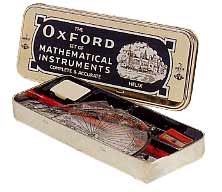
circa Early Jurassic Period
Despite sounding ominously like … umm … a local translation of the word diarrhoea, loci (singular: locus) take us back to prehistorical times where intellectual cavemen students couldn’t afford the luxury of our sophisticated counting machines.
Instead, archaeological digs on fossilized remains have uncovered conclusive evidence that they rely on rudimentary tools like the Oxford Math Instrument Set to solve their E-Maths problems, provided they remembered to bring them to cave class, tightened their compass screws, and had their pencil lead refilled.
More importantly, well-preserved expressions of glee on their fossilized faces confirmed that locus is really a fun, cutish topic that’s easy to score. Have a look at this typical question discovered scrawled in a cave carbon-dated to a million years ago:
Vertices A and B of a triangle are 14 cm apart, vertex C is 11 cm from A and 8 cm from B.
- Using ruler and compasses only, construct the ΔABC.
- On the same diagram,
- construct, for all points inside the triangle
- the locus of point P such that AP = 10 cm.
- the locus of point Q such that area of triangle AQB < 21 cm2.
- the locus of point R such that AR = BR.
- construct the locus of point S such that ∠ ASB = ∠ ACB.
- construct, for all points inside the triangle
- Y is a point in the triangle such that AY ≤ 10 cm, the area of ΔAYB < 21 cm2 and BY ≤ AY.
Indicate, by shading, the region in which Y must lie.
This time round, Miss Loi is going to be nice and contribute to Science by revealing some of the hieroglyphic drawings discovered alongside the question in the cave:
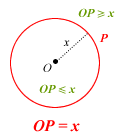
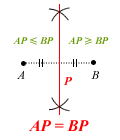
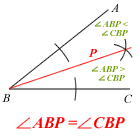
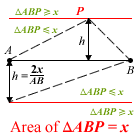
She also urges all budding archaeologists to study the next two drawings from the neighbouring cave of the Angle Properties of Circles well, as they often tend to go hand-in-hand:
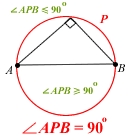
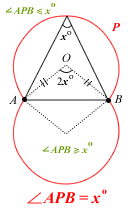
Note: Red = locus P and Green = inequality region
As you can see, locus questions haven’t really changed since neanderthal times. Basically you’ll be asked to partition and chip away your drawing one-by-one till you discover utopia in the form of some puny shaded area.
Which means you’ll need to pay particular attention to the green parts of Miss Loi’s diagrams.
Here’s some more loci notes for the benefit of mankind:
- You’ve been asked to CONSTRUCT i.e. you must use your antiquated mathematical instrument, even though you’re not a retro person. Don’t agar-agar anyhow use ruler to draw.
- Even though it might seem like a lot of work, each part typically carry only 1-2 marks, so you’ll have to be FAST and master your compass/protractor wielding skills.
- Those little crosses and arcs carry working marks! Miss Loi once had an aspiring fine-arts student who actually painstakingly erased every little arc and pair of crosses on her finished loci diagram, so that it looked nicer! Oh dear.
With so many givens, this should be the easiest Jφss Sticks question ever.
So easy in fact, the cavemen must be ROTFLMAO-ing in their fossilized graves right now.
P.S. If you’ve drawn your solution and want Miss Loi to check for you, scan it and email as an attachment to missloi [at] exampaper [dot] com [dot] sg.
P.P.S. This should also be the most cheong hei question post ever. Remember the cruel irony of short questions?.
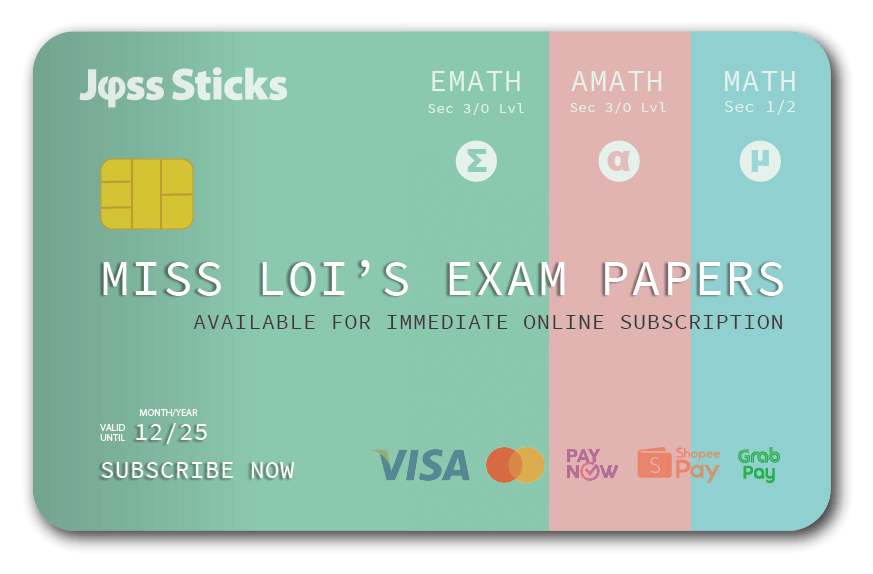
 Miss Loi is a full-time private tutor in Singapore specializing in O-Level Maths tuition. Her life’s calling is to eradicate the terrifying LMBFH Syndrome off the face of this planet. For over years she has been a savior to countless students …
Miss Loi is a full-time private tutor in Singapore specializing in O-Level Maths tuition. Her life’s calling is to eradicate the terrifying LMBFH Syndrome off the face of this planet. For over years she has been a savior to countless students … 




















